Last-Minute NYC Holiday Gift Guide 🎁
We’ve created a holiday gift guide with presents for the intrepid New Yorker that should arrive just in time—

Starting where Don’t Forget to Look Up left off last time, the final stretch of Fifth Avenue takes us through East Harlem, ending at the Harlem River. We’ve already seen Fifth Avenue shift from apartment buildings, to high-end stores, to more apartment buildings, mansions, and many, many museums. Above Central Park, Fifth Avenue is home to row houses, NYCHA public housing, hilly Marcus Garvey Memorial Park, and a hodgepodge of architectural styles.
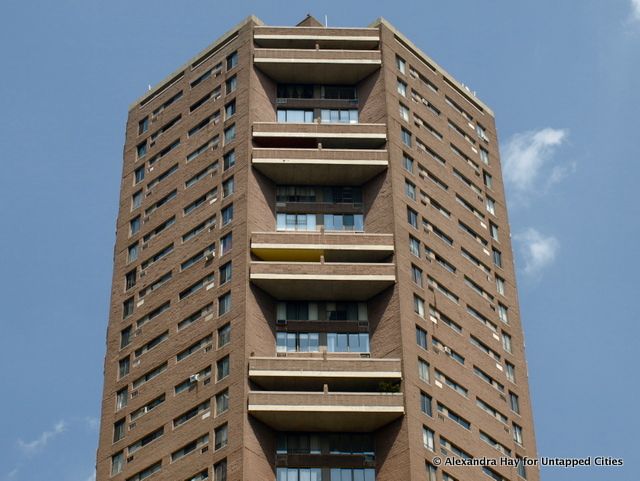
Arthur A. Schomburg Plaza
Gruzen & Partners and Castro-Blanco, Piscioneri & Feder’s design for Arthur A. Schomburg Plaza, completed in 1975, provides a landmark for the northeast corner of Central Park with its two 35-story octagonal brick towers.
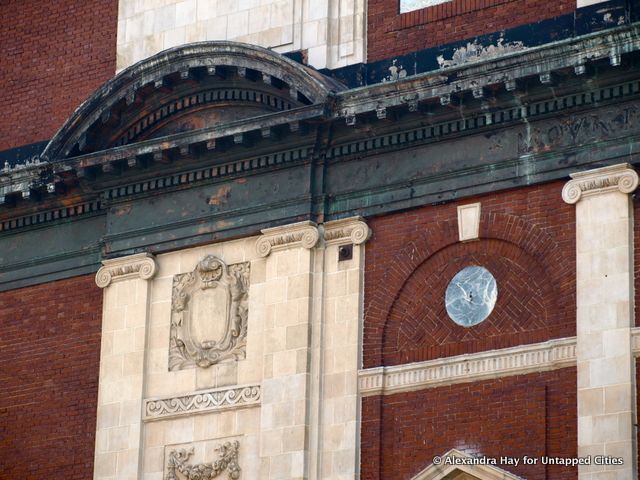
1421 Fifth Avenue
Much of the area’s buildings are at a much smaller scale than the towers of Schomburg Plaza. Now the Church of the Lord Jesus Christ of the Apostolic Faith, 1421 Fifth Avenue was originally the Mount Morris Theatre. According to the New York Times, the theater was built in 1913, and its age does show, although the building is no less impressive for that. The mix of brickwork and stone, carvings, cornices, and Ionic pilasters make for a very striking facade. On the Grand Concourse in the Bronx, you can find another grand old theater that has been converted to a church, and you can read more about the theaters-to-churches trend in the Wall Street Journal.
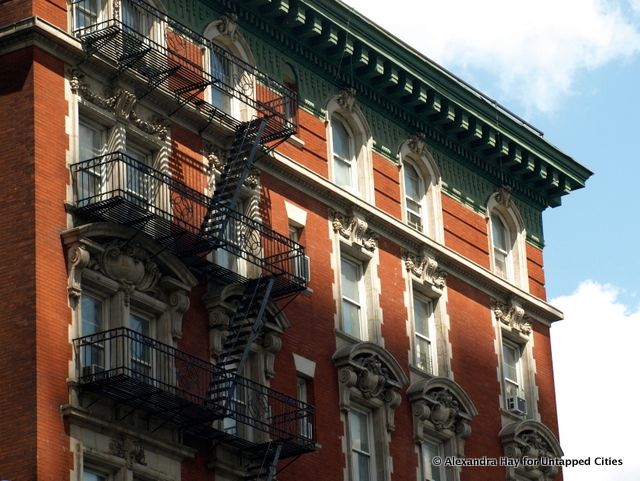
2 West 120th Street
On the southwest corner of Fifth Avenue and 120th Street stands a stately, late nineteenth-century tenement. Above the brick and terra-cotta facade and ornately framed windows is a massive, dentillated cornice that projects outward enough to give the top-floor windows some shade.
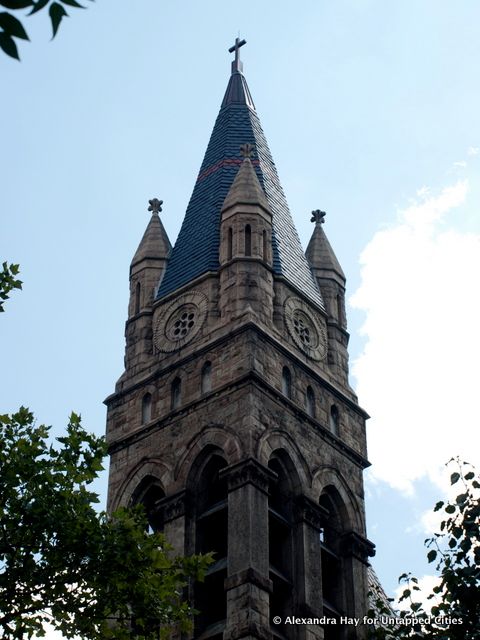
2067 Fifth Avenue, St. Andrew’s Episcopal Church
The Gothic Revival St. Andrew’s Church, built in 1873 and enlarged in 1890, looks like it was carved out of one of upper Manhattan’s rocky outcroppings. Its rock-face granite walls give it a rugged, solid look, but the clock tower, unusual because it is set back from the corner, is relatively slender, topped by a spire covered in slate.
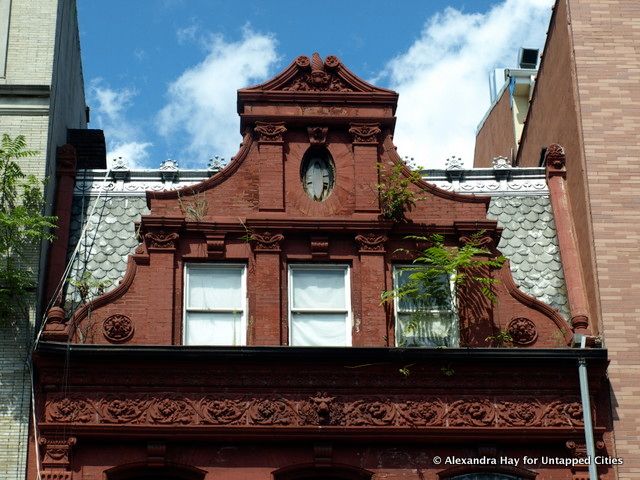
2064 Fifth Avenue
Despite its dilapidated state and the fact that there are plants starting to grow on it, 2064 Fifth Avenue is a simply magnificent building. Built in the 1880s, this Renaissance-style town house has a gorgeous, neo-Dutch gable with six Corinthian pilasters. Extravagantly decorated, the whole facade is awash with gorgeous, though somewhat worn, details. 2064 Fifth Avenue was listed this summer for $3.5 million—quite a price tag, given its condition.

2064 Fifth Avenue
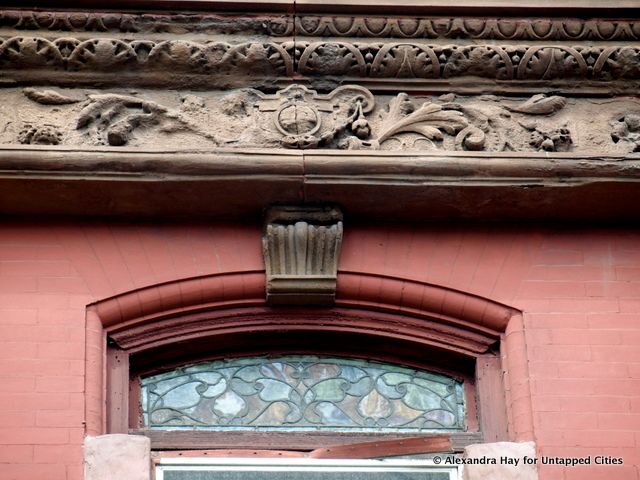
2064 Fifth Avenue’s stained glass

2069 Fifth Avenue
Just across the street is another red brick standout, with an off-center, dentillated pediment above a large, arched window.

2068-2076 Fifth Avenue
Sticking with the late nineteenth-century brick theme, 2068-2076 Fifth Avenue has large gables and the added bonus of a rounded turret on the corner–a castle-like flourish on this brick and brownstone group of row houses.

2366 Fifth Avenue, 369th Regiment Armory of the NY National Guard
And here we have it: Fifth Avenue’s final building, the 369th Regiment Armory. Whereas some of New York’s other armories resemble medieval fortresses, 2366 Fifth Avenue is a hulking monolith with Art Deco details at the top of the building and intricate brickwork all over.

145th Street Bridge
We’ve reached the very end of Fifth Avenue: Harlem River Drive and the Harlem River itself, crossed by the truss work of the 145th Street Bridge.
The next time you’re in New York, or in any city, don’t forget to look up! You’ll be richly rewarded for your efforts with surprising views that most passersby unseeingly pass by.
Subscribe to our newsletter